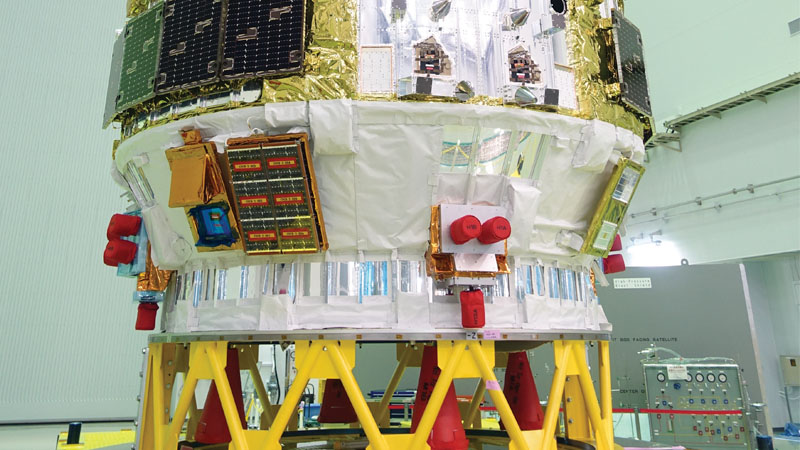Stay Up to Date
Submit your email address to receive the latest industry and Aerospace America news.
The Space Tethers Technical Committee focuses on the development and use of tether-based technology for space systems.
The space tethers community saw new developments in 2016, which included the Japan Aerospace Exploration Agency continuing to develop the Konotori Integrated Tether Experiment, or KITE, a flight demonstration of an electrodynamic tether. It is now planned for launch in late 2016 or early 2017, delayed in order to address a problem with the H-2 Transfer Vehicle uncovered during launch preparations.
KITE will demonstrate key technologies for active debris removal using electrodynamic tethers through a zenith-deployed, 700-meter-long bare tether that collects electrons from the ambient space plasma and a field-emission cathode on the H-2 Transfer Vehicle that emits 10-milliamp- level current, hence providing propellant-free deorbit propulsion.
Star Technology and Research of South Carolina and subcontractors Tether Applications of California, Electrodynamic Technologies of Minnesota and the U.S. Naval Research Laboratory matured key components, features and operations of their ElectroDynamic Delivery Express, or EDDE, spacecraft. A new 12U cubesat–sized “mini-EDDE” can distribute nanosatellites from the International Space Station to Sun-synchronous orbit. A new precious-metal steam resistojet, which has a specific impulse of around 200 seconds, can raise EDDE above the ISS and drive EDDE’s “born spinning” deployment. EDDE’s rotation stiffens the long conductor and improves agility by allowing a wider range of conductor angles to the Earth’s magnetic field. That allows EDDE to change orbit plane at greater than 1 degree per day, and climb or descend hundreds of kilometers per day, even in polar orbit. Electrodynamic Technologies developed ways for EDDE to actively avoid all tracked objects. The Naval Research Lab developed methods to track persistently thrusting objects, including tethers and other objects that form fuzzy or irregularly glinting radar targets.
Two Spanish companies, Sener and Tecnalia, in collaboration with the University of Padova in Italy and the University Carlos III de Madrid, are pursuing, with European Space Agency funding, the development of a commodity-based deorbiting system from low Earth orbit using an electrodynamic tether. In parallel, the team carried out research activities on the Thermionic Bare Tether concept and showed its potential effectiveness in deorbiting objects left in geosynchronous-transfer orbits.
Researchers at the University of Washington have defined two mission concepts to use electro-dynamic tethers for passively remediating small pieces of debris in Earth orbit that are untrackable by surface radar. The missions take advantage of the debris’ charge buildup that occurs naturally in a space environment. One concept uses the tether’s electric field to scatter the debris into a hyperbolic escape orbit, and the second concept uses a vacuum-like mechanism that attracts debris to the surface of the tether.
The Miniature Tether Electrodynamics Experiment, or MiTEE, has been organized into a series of two cubesat missions developing the capability to ultimately deploy a pico-/femtosatellite-tether system (satellites with mass less than 200 grams). The missions will assess the key dynamics and electrodynamic fundamentals of a very short tether system.
The first mission, MiTEE-1, will deploy an end-body on a boom out to a distance of one-half to 1 meter and then apply a bias of about plus-200 volts to the end-body with respect to the cubesat electrical common. The cubesat will also emit an electron beam to close the electrical circuit through the ionosphere. A Langmuir probe onboard will characterize the ionosphere. MiTEE-1 is scheduled to launch in December 2017 as part of NASA’s cubesat launch Initiative. ★
Stay Up to Date
Submit your email address to receive the latest industry and Aerospace America news.




